Living with a cataract is like looking out at the world through murky glass. With the vision hazy and clouded, even the most normal things in life can become difficult, like reading a book, watching the television, or driving a car. The color slowly fades from the world as lights develop halos and glares, and darkness spreads. As cataracts develop, the vision becomes progressively more clouded and opaque, eventually leaving you blind.
Many people experience deterioration in their vision as they get older. With more advanced cataracts, there is little that can be done other than removing them by surgery and inserting an intraocular artificial lens. This can be a dangerous operation, however, with risks of serious complications, including permanent loss of vision. By far the better option is to maintain the health of the eyes to decrease the risk of cataracts developing in the first place. Incorporating the acupressure points for cataract into your daily routine may help to prevent cataracts from forming or at least stall their progression.
How Do Cataracts Form?
Most cataracts form as a result of the natural degeneration of the proteins in the lens. As we get older, the lenses in the eyes get progressively more rigid and opaque. Proteins and fibers within the lenses start to break down and stick together, clouding over the eyes. Cataracts interrupt the stream of light as it passes through the lens, preventing a clear image from projecting onto the retina. As the cataract develops, you may experience blurred vision and night blindness as the cloudy lenses become less and less transparent.
While the causal connection is not entirely understood, there are many other factors correlated with cataract risk. Those who are obese, have high blood pressure, or suffer from diabetes are at greater risk, and smoking or over-indulging in alcohol may also make you more likely to develop cataracts in later life. Other factors more directly related to the eye include previous surgeries or inflammation, over-exposure to sunlight, and prolonged use of certain steroid medications.
How Can Acupuncture Help With Cataract?

In Traditional Chinese Medicine (TCM), eye diseases are associated with deficiencies in the liver, the kidneys, and the blood. The spleen is also thought to play a role due to its importance in the transportation of blood and vital energy in the body. Impurities in the blood may lead to undernourishment of the eyes. Acupressure for cataract concentrates on enhancing the function of the liver, the kidneys, and the spleen and stimulating the flow of blood to the eye. This can be very effective in delaying the progression of ophthalmic diseases.
A systematic review of over 500 cases demonstrates the success of acupuncture in the treatment of eye diseases, including retinitis pigmentosa, glaucoma, and cataracts. Acupuncture is not magic—it cannot heal tissues damaged beyond repair, nor restore sight to the blind—and it is not intended to replace medication or surgery in cataract treatment. Research suggests that acupuncture acts on the macula alone, and not on the entire retina. However, activating the acupuncture points for cataract is an extremely safe treatment and may be highly effective in improving visual acuity.
Because of the inherent risk involved, a surgeon will usually wait until the person’s life begins to be severely impacted before suggesting surgical removal of the cataract. While other measures such as eye drops and stronger eyeglasses may help to mitigate symptoms, activating the acupressure points for cataract in these early stages can help to improve visual acuity and stall the progression of the cataract.
Is Acupressure Safe After Cataract Surgery?
Researchers at Fenghua District People’s Hospital determined that acupuncture improved positive outcomes for patients who had recently undergone surgical removal of cataracts. Those patients treated with acupuncture had better intraocular pressure, aqueous outflow, and visual acuity and suffered less pain compared to the control group. After 60 days of treatment, the number who presented with clinical symptoms was significantly lower in the TCM treatment group.
As well as improving positive outcomes, acupuncture and acupressure may have a role to play in reducing stress and anxiety among cataract patients. Researchers at the University of Milan found that preoperative anxiety significantly decreased in patients treated with acupuncture. In addition, those treated with sham acupuncture reported no such calming effect, suggesting that the results were not influenced by placebo.
While acupuncture treatment is something best left to qualified professionals, you can stimulate the acupressure points for cataract at home through massage to achieve many of the same benefits.
What Are The Acupressure Points For Cataract?
Acupoint: EM-5 (Other Names: Tai Yang)
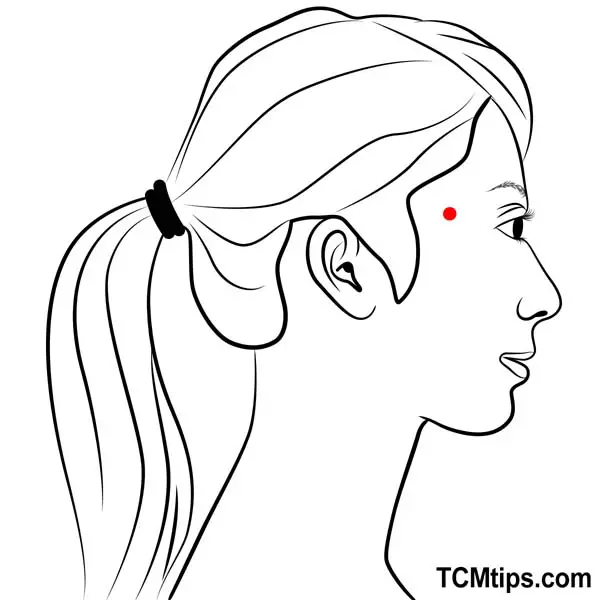 Although the Tai Yang is not located on a traditional meridian, it can still provide immense benefits to the body and is one of the primary acupressure points for the eyes.
Although the Tai Yang is not located on a traditional meridian, it can still provide immense benefits to the body and is one of the primary acupressure points for the eyes.
You can use stimulate the Tai Yang in combination with the small intestine 18 acupoint to improve alertness and help you to stay awake. These twin points enhance blood flow and stimulate the nervous system, helping to relieve brain fog and alleviate headaches.
In addition to all these other benefits, EM-5 is also one of the indispensable acupressure points for cataracts and macular degeneration. It is located on the temples, in the depression around one finger-width out from the midpoint between the end of the eyebrow and the corner of the eye. Apply gentle pressure here to refresh the eyes.
Acupoint: KI-1 (Other Names: Kidney-1/Yong Quan/Gushing Spring)
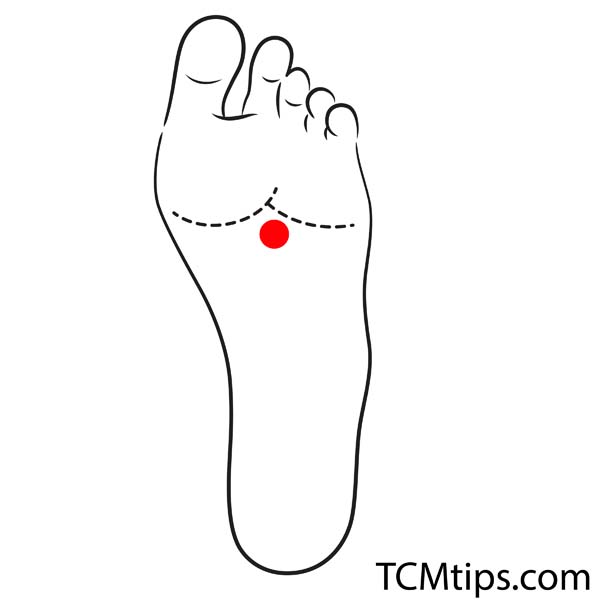
Activating the Yong Quan, as it is known in Chinese, enhances the function of the liver and kidneys, which, in Chinese medicine, are directly related to the eyes. By improving the flow of blood and providing nourishment to the eyes, the Yong Quan may help in preventing the formation of cataracts.
Apply firm pressure on this acupressure point for a few seconds at a time.
Acupoint: GB-20 (Other Names: Gallbladder-20/Feng Chi/Wind Pool)
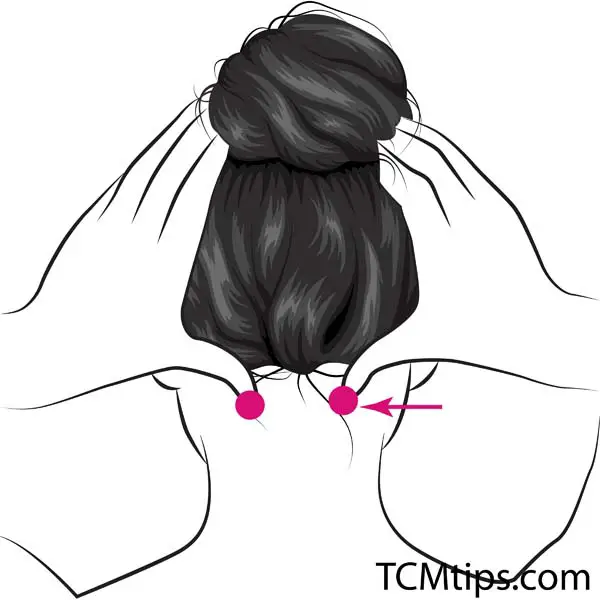
Although located on the gallbladder meridian, GB-20 is also considered an important acupoint in the treatment of eye diseases.
To activate the Wind pool, apply firm pressure with both thumbs.
Acupoint: Bl-10 (Other Names: Urinary Bladder-10/Tian Zhu/Celestial Pillar)
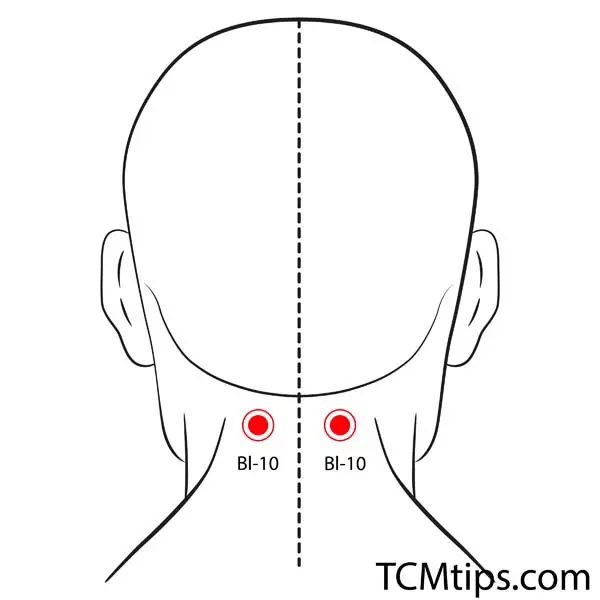
Press each acupoint for five or six seconds with the thumb or index finger. Repeat three or more times.
Acupoint: Bl-1 (Other Names: Urinary Bladder-1/Jing Ming/Bright Eyes)
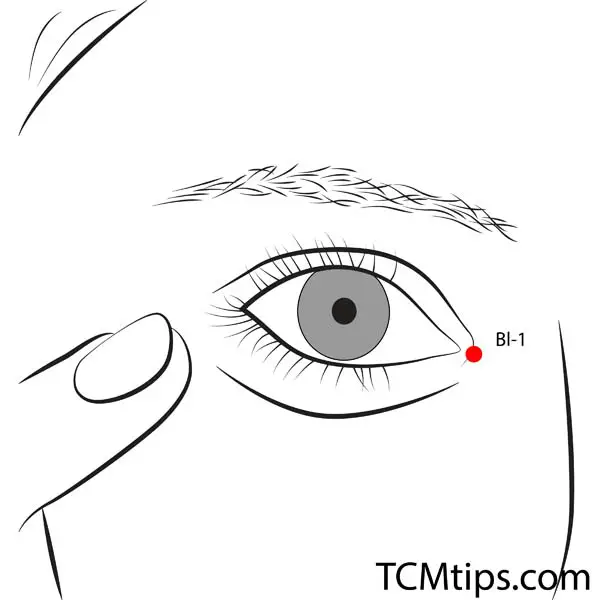 The Jing Ming is an essential acupoint that works for various different eye problems. Effective in the treatment of cataracts and glaucoma, Bl-1 is also one of the primary acupressure points for eye floaters.
The Jing Ming is an essential acupoint that works for various different eye problems. Effective in the treatment of cataracts and glaucoma, Bl-1 is also one of the primary acupressure points for eye floaters.
The Bl-1 acupuncture points are located close to the inner corners of the eyes. Look for the small depression at the top of the nose, slightly above the corner of the eyes. Stimulation here improves the discharge of tears, making Bl-1 one the best acupressure points for dry eyes.
Be careful when pressing this acupoint, as you don’t want to push against the eye or the mucus membranes. Instead, focus the pressure on the bony area. Massage gently, rubbing in a circular motion with the index finger. Press for a few seconds, then rest. Repeat two or three times.
Activating this point several times throughout the day will brighten up the eyes and alleviate fatigue. As well as being effective for blurred vision and cataract prevention, Bl-1 is also used in acupressure for autoimmune inflammation.
Acupoint: EX-UE5 (Other Names: Da Gu Kong)
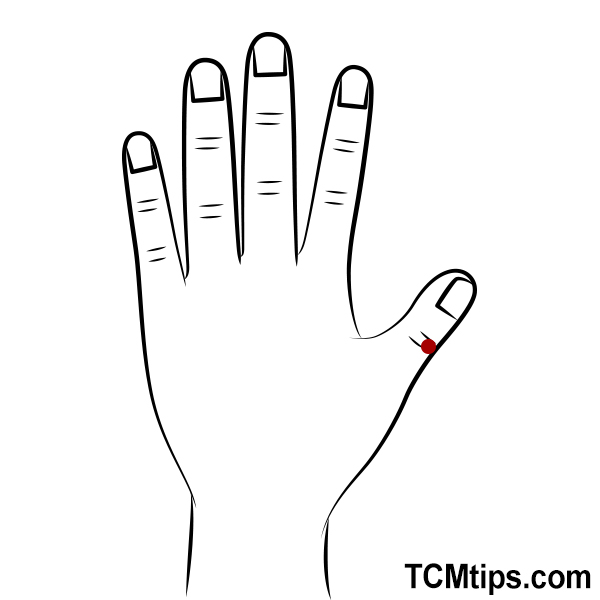
The last of the acupressure points for cataract is not located on a traditional meridian at all. Rather, EX-UE5 is one of the “Extra Points,” introduced long after the traditional acupoints were defined. Located on the dorsal aspect of the thumb, the Da Gu Kong helps to regulate the functions of the stomach and is indicated in the treatment of various eye diseases, including cataracts.

Try our Anti-Aging Gua Sha Tool designed to bring out your skin’s natural glow.
Best Gua Sha Product- Anti-Aging: The tool is designed to target 11 specific aging signs such as wrinkles and sagging skin. By following the 7-step routine, users can improve skin firmness and reduce fine lines naturally.
- Enhances Skincare Routine: It works effectively with serums and lotions, boosting absorption and efficacy of skincare products.
- Visible Skin Improvement: Users can expect a smoother complexion, reduced puffiness, and a more youthful appearance.
 P. Sze
P. Sze 

















